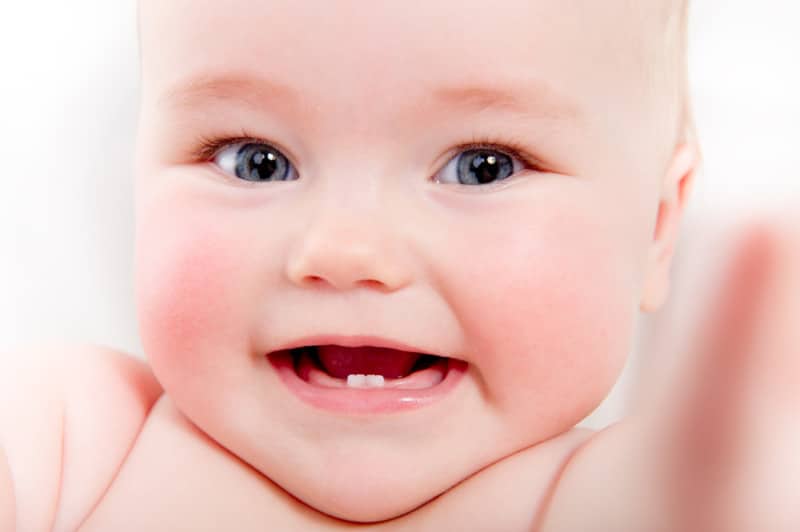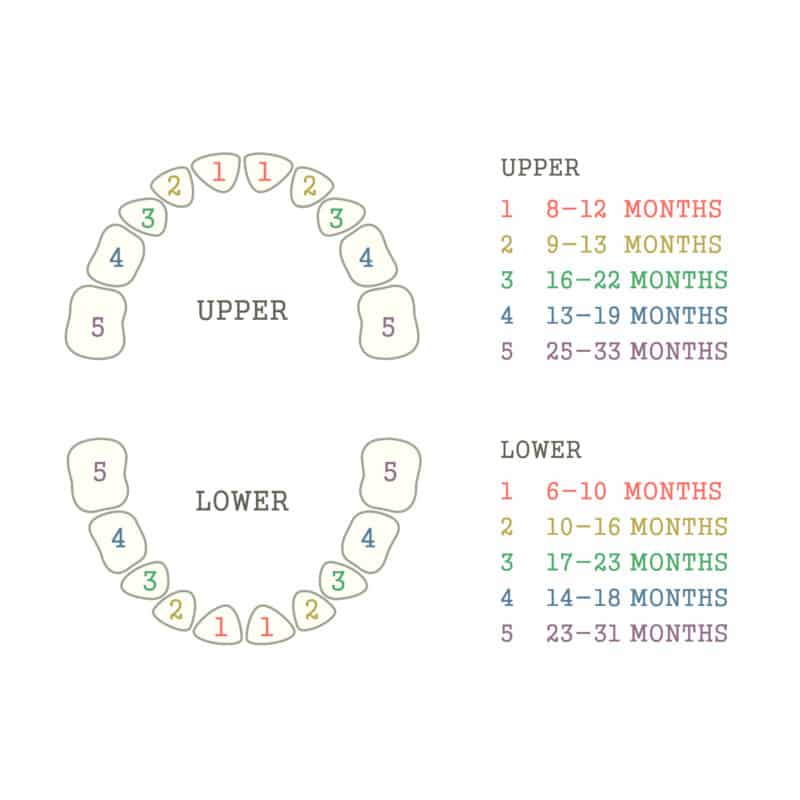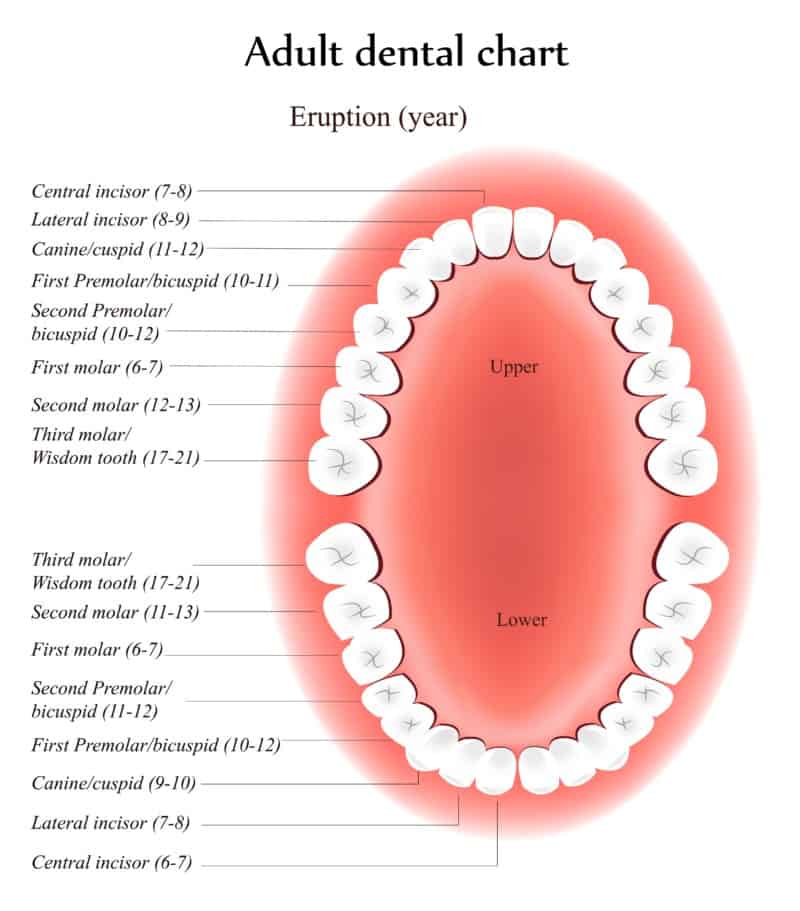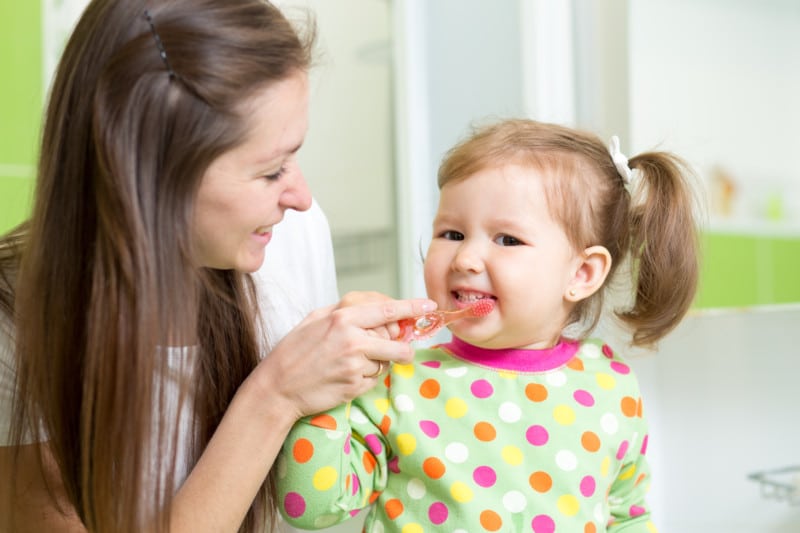Kid Tooth Tips: Baby vs. Adult Teeth
Maybe you’ve got a little one whose mouth has turned into a faucet from all that drool, or maybe your kiddo is awaiting his or her first visit from the Tooth Fairy. Either way, it’s time to get the scoop on those teeth. Want to know the drill on baby versus adult teeth? Then look no further!
Baby Teeth

Sometime around six months your little peanut will leave that gummy smile behind and start getting some chompers. These are called primary teeth. When it’s all said and done, your child will have 20 of them.
The breakdown goes like this:
- 4 second molars
- 4 first molars
- 4 cuspids (or canine teeth)
- 4 lateral incisors
- 4 central incisors

Adult Teeth
You might think once the Tooth Fairy starts coming those adult teeth are just around the corner, but there’s a good chance they’ve already started popping up! This time your child will graduate from those 20 baby teeth to 32 permanent teeth. The process starts when your child is around six and is usually (almost) finished by the time they’re 13. Then come the wisdom teeth…those start pushing their way in between 17 and 21 years old.
Children will have a combination of primary and permanent teeth until they’re around 13 years old.

How Do You Take Care of Them?
As soon as you see those first teeth pop up, you should start brushing. Use a soft brush with a small head and large handle with a teeny tiny amount of children’s toothpaste. You can start using fluoride toothpaste once your child is three years old.

Grown-ups should be in charge of brushing until the little guy (or girl) is about six. That’s when they’ll be able to hold their own brush and rinse and spit by themselves. Let your little one brush their own teeth before then in addition to your time with the toothbrush – that way they can practice!
Make sure you brush your child’s teeth (or they do it themselves) twice a day – in the morning and just before bed. You should start flossing as soon as your little one has two teeth that touch. It might be easier to use those floss sticks or picks instead of regular floss.
Knowing what teeth your child will get when is only half the battle. Making sure you get them to brush and floss daily is what’s most important to ensure those teeth stay healthy for a long time.
Sources:
http://www.ada.org/~/media/ADA/Publications/Files/patient_58.ashx
http://www.webmd.com/oral-health/guide/brushing-flossing-child-teeth
http://www.webmd.com/oral-health/guide/teeth-birth-adulthood#1